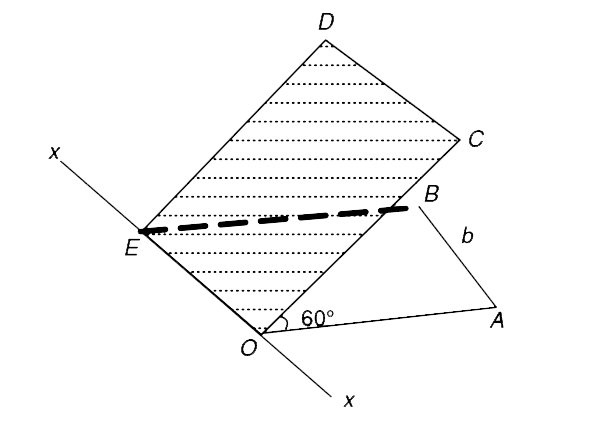A rectangular plate has a circular cavity as shown in the figure. If we increases its temperature then which dimension will increases in following figure.

Distance between any two point on a object increases with increases in temperature
So, all dimension a,b,c and d will increase
Topper's Solved these Questions
- BOOK - RESONANCECHAPTER - CALORIMETRY AND THERMAL EXPANSIONEXERCISE - Solved miscellaneous problems1videos
CALORIMETRY AND THERMAL EXPANSION
- BOOK - RESONANCECHAPTER - CALORIMETRY AND THERMAL EXPANSIONEXERCISE - Problem26videos
CALORIMETRY AND THERMAL EXPANSION
- BOOK - RESONANCECHAPTER - CALORIMETRY AND THERMAL EXPANSIONEXERCISE - Advanced Level Problems13videos
CALORIMETRY AND THERMAL EXPANSION
- BOOK - RESONANCECHAPTER - CALORIMETRYEXERCISE - Exercise19videos
CALORIMETRY
- BOOK - RESONANCECHAPTER - CAPACITOREXERCISE - Exercise45videos
CAPACITOR
Similar Questions
Knowledge Check
- Question 1 - Select One
Which of the following with increase in temperature?
AMolalityBWeight fraction of soluteCFraction of solute present in waterDMole fraction - Question 2 - Select One
Which increases on increase of temperature
AEnergy of activation (Ea)BCollision frequency (Z)CRate constant (k)DBoth (b) and ( c) - Question 3 - Select One
When we increase the temperature, the rate of reaction increases because of
Amore number of collisionsBdecrease in mean free pathCmore number of energetic collisionsDless number of energies collisions
A uniform rectangular plate has been bent as shown in the figure. The two angled parts of the plate are of identical size. The moment of inertia of the bent plate about axis xx is I. Find its moment of inertia about an axis parallel to xx and passing through the centre of mass of the plate.
 View Solution
View SolutionAs the temperature of gases increases, its density also increase.
View SolutionIf we increase temperature of a gas sample, which of the following is true?
View SolutionA triangular plate has two cavities , one square and one rectangular as shown in figure . The plate is heated.
_E01_066_Q01.png) View Solution
View SolutionAn ideal gas undergoes a circular cycle as shown in the figure. Find the ratio of maximum temperature of cycle to minimum temperature of cycle.
 View Solution
View Solution

